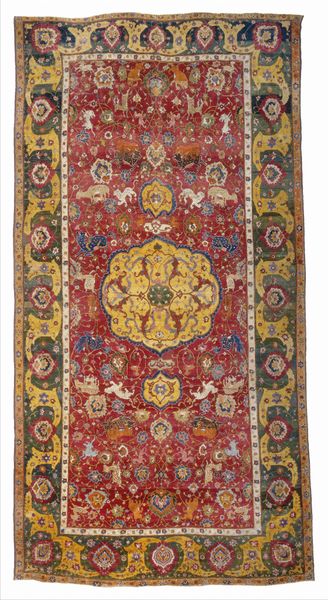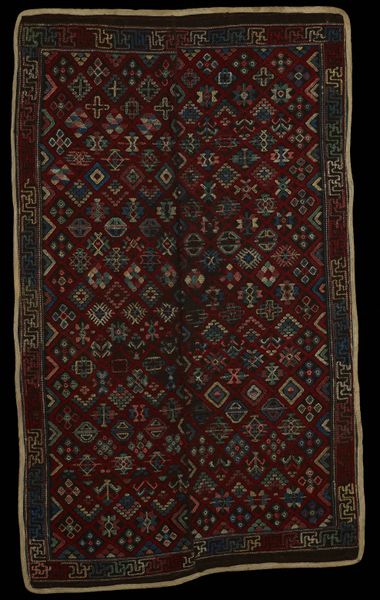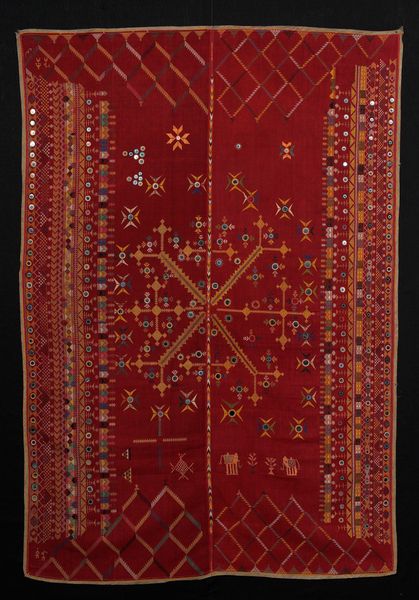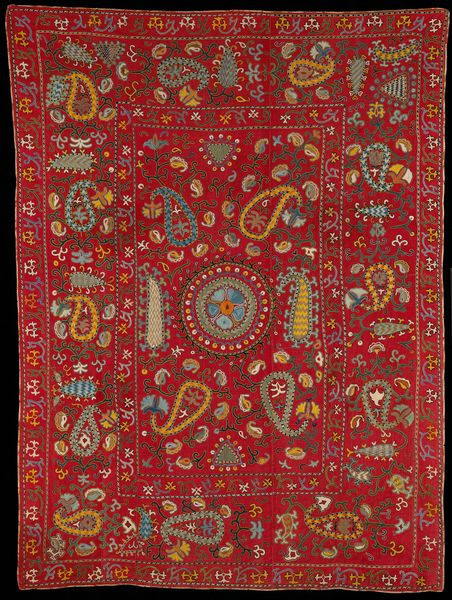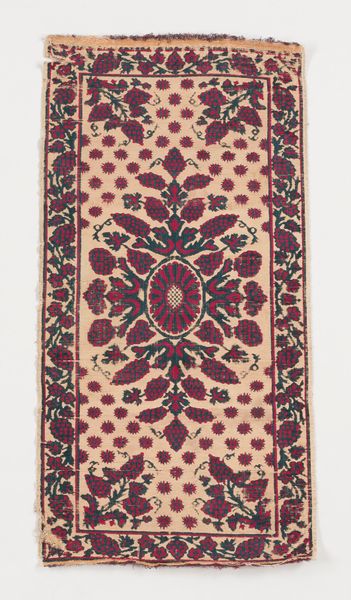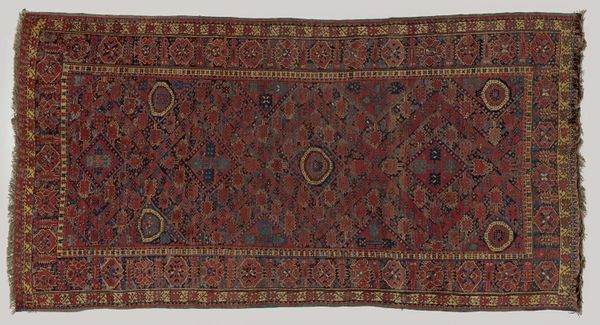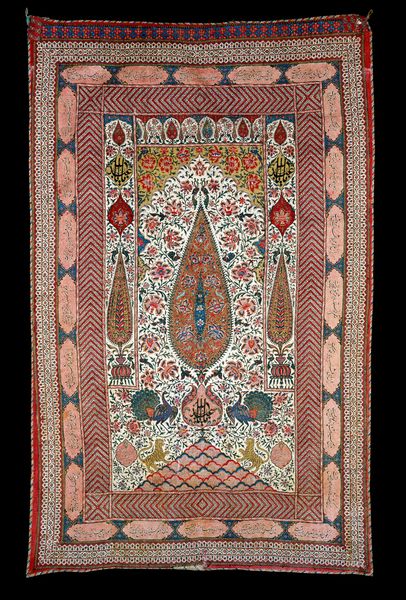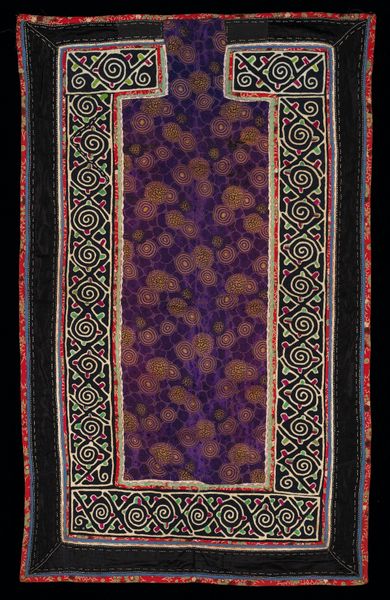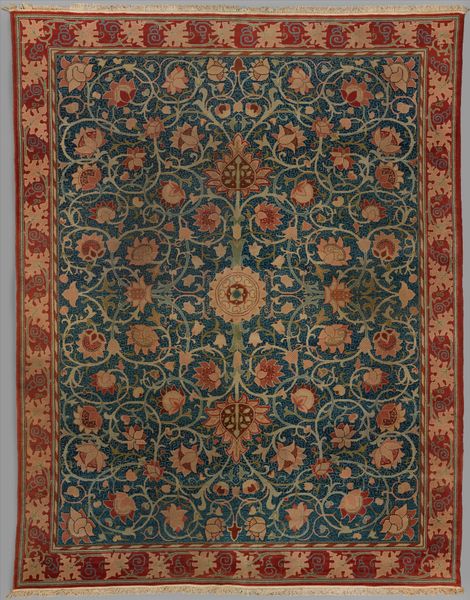
weaving, textile
#
natural stone pattern
#
naturalistic pattern
#
weaving
#
textile
#
geometric pattern
#
abstract pattern
#
organic pattern
#
geometric
#
repetition of pattern
#
pattern repetition
#
islamic-art
#
textile design
#
imprinted textile
#
layered pattern
Dimensions: height 400.0 cm, width 185.0 cm
Copyright: Rijks Museum: Open Domain
This impressive textile labelled "Oosters tapijt" or "Eastern Carpet" was crafted by Quli Ghani, though the exact date and place of origin remain unknown. It presents a field of repeating motifs set within a decorative border. The carpet's origins would have been enmeshed in complex trade networks. The establishment of the East India Company in the 17th century, for example, highlights a period of intense exchange, but also colonial power dynamics. How did the tastes of European markets influence designs? Were local artisans able to express their own cultural identities, or were they forced to adhere to external demands? Studying the carpet's materials and dyes can reveal trade routes and production techniques, and the motifs and patterns may hold symbolic meaning related to the cultural or religious beliefs of its creators. By examining historical documents, trade records, and other textiles from the period, we can gain insight into the socio-economic context that shaped its creation. The "Eastern Carpet" serves as a potent reminder that art is always entangled with social and institutional forces.
Comments
No comments
Be the first to comment and join the conversation on the ultimate creative platform.
